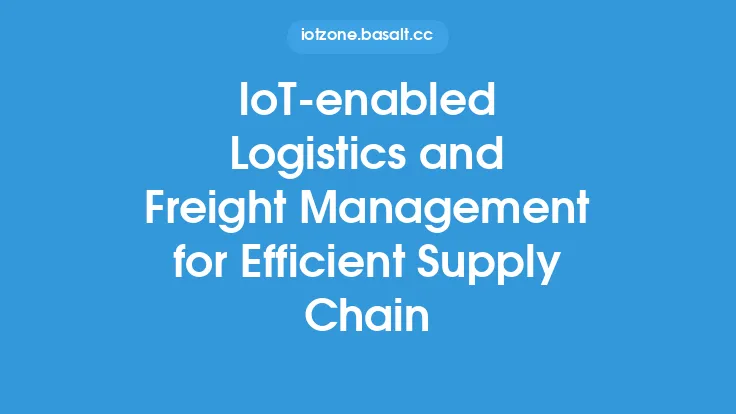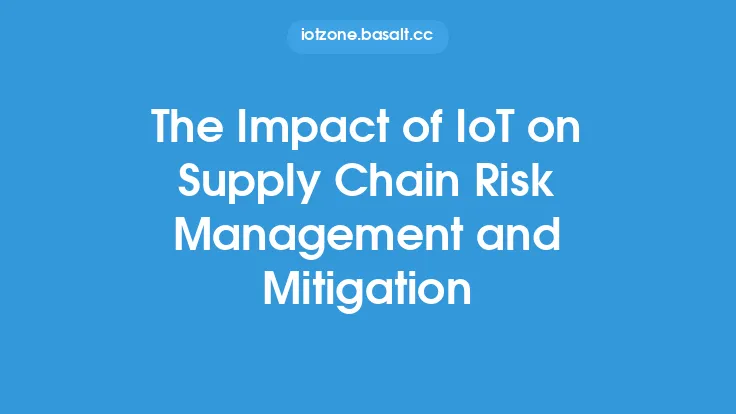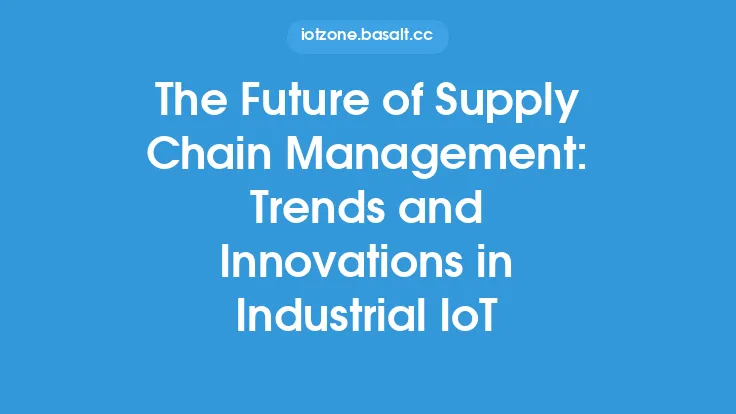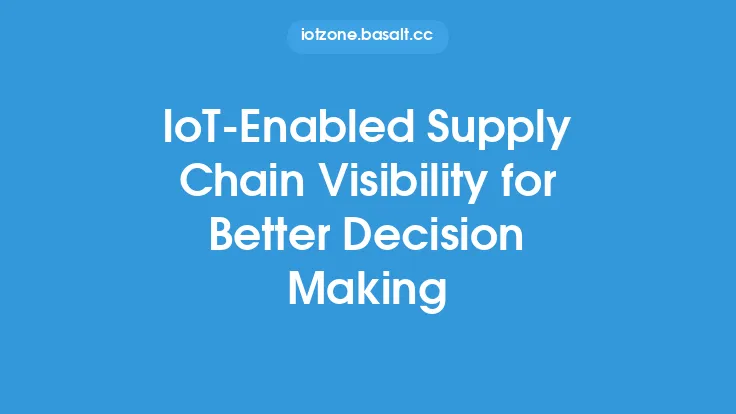The increasing complexity of global supply chains has led to a growing need for transparency and accountability. As products move through the supply chain, they may pass through multiple countries, companies, and facilities, making it difficult to track their origin, movement, and ownership. This lack of visibility can lead to issues such as counterfeiting, theft, and contamination, which can have serious consequences for businesses and consumers. The Internet of Things (IoT) offers a solution to this problem by providing real-time data and visibility into the supply chain.
Introduction to IoT in Supply Chain Management
IoT technology involves the use of sensors, GPS, and other devices to collect and transmit data about the location, condition, and movement of products. This data can be used to create a digital record of the product's journey, from raw materials to delivery to the end customer. By leveraging IoT, businesses can gain greater visibility into their supply chains, enabling them to identify potential issues and take corrective action. IoT devices can be used to track a wide range of parameters, including temperature, humidity, and vibration, which can be critical for products that are sensitive to environmental conditions.
Key Components of IoT-Based Supply Chain Transparency
There are several key components that are necessary for IoT-based supply chain transparency. These include:
- Sensors and Devices: These are the physical components that collect and transmit data about the product and its environment. Sensors can be used to track a wide range of parameters, including temperature, humidity, and vibration.
- Communication Networks: These are the systems that enable the transmission of data from the sensors and devices to the cloud or other centralized systems. Communication networks can include cellular networks, Wi-Fi, and satellite communications.
- Data Analytics: This is the process of analyzing the data collected from the sensors and devices to gain insights into the supply chain. Data analytics can be used to identify trends, detect anomalies, and predict potential issues.
- Cloud Computing: This is the infrastructure that enables the storage and processing of large amounts of data. Cloud computing provides a scalable and flexible platform for managing and analyzing supply chain data.
Benefits of IoT-Based Supply Chain Transparency
The use of IoT to achieve supply chain transparency offers a number of benefits, including:
- Improved Visibility: IoT provides real-time data and visibility into the supply chain, enabling businesses to track the movement and condition of products.
- Increased Accountability: By creating a digital record of the product's journey, IoT enables businesses to identify potential issues and take corrective action.
- Reduced Risk: IoT can help to reduce the risk of counterfeiting, theft, and contamination by providing a secure and tamper-evident record of the product's origin and movement.
- Improved Efficiency: IoT can help to improve supply chain efficiency by enabling businesses to optimize their logistics and distribution operations.
Technical Considerations for Implementing IoT-Based Supply Chain Transparency
Implementing IoT-based supply chain transparency requires careful consideration of several technical factors, including:
- Device Management: This involves the management of the sensors and devices that collect and transmit data. Device management includes tasks such as device provisioning, configuration, and maintenance.
- Data Security: This involves the protection of the data collected from the sensors and devices. Data security includes tasks such as encryption, authentication, and access control.
- Scalability: This involves the ability of the system to handle large amounts of data and scale to meet the needs of the business. Scalability includes tasks such as data processing, storage, and analytics.
- Interoperability: This involves the ability of the system to integrate with other systems and devices. Interoperability includes tasks such as data exchange, protocol conversion, and system integration.
Real-World Examples of IoT-Based Supply Chain Transparency
There are several real-world examples of IoT-based supply chain transparency, including:
- Pharmaceuticals: IoT is being used to track the movement and condition of pharmaceuticals, enabling businesses to ensure the authenticity and safety of their products.
- Food and Beverage: IoT is being used to track the movement and condition of food and beverage products, enabling businesses to ensure the safety and quality of their products.
- Aerospace: IoT is being used to track the movement and condition of aerospace components, enabling businesses to ensure the safety and reliability of their products.
Conclusion
In conclusion, IoT offers a powerful solution for achieving supply chain transparency and accountability. By leveraging IoT, businesses can gain greater visibility into their supply chains, enabling them to identify potential issues and take corrective action. The use of IoT-based supply chain transparency offers a number of benefits, including improved visibility, increased accountability, reduced risk, and improved efficiency. However, implementing IoT-based supply chain transparency requires careful consideration of several technical factors, including device management, data security, scalability, and interoperability. As the use of IoT continues to grow and evolve, it is likely that we will see even more innovative applications of this technology in the supply chain.




